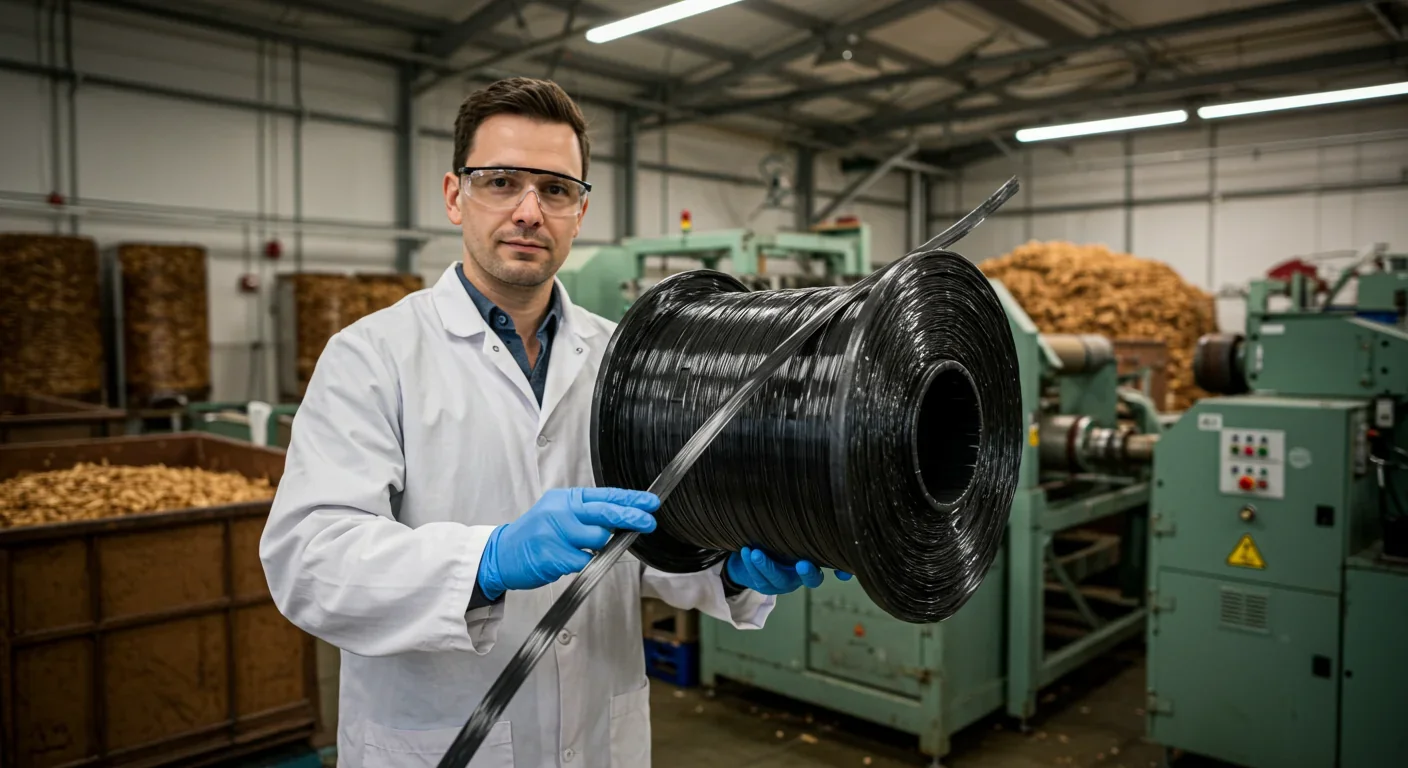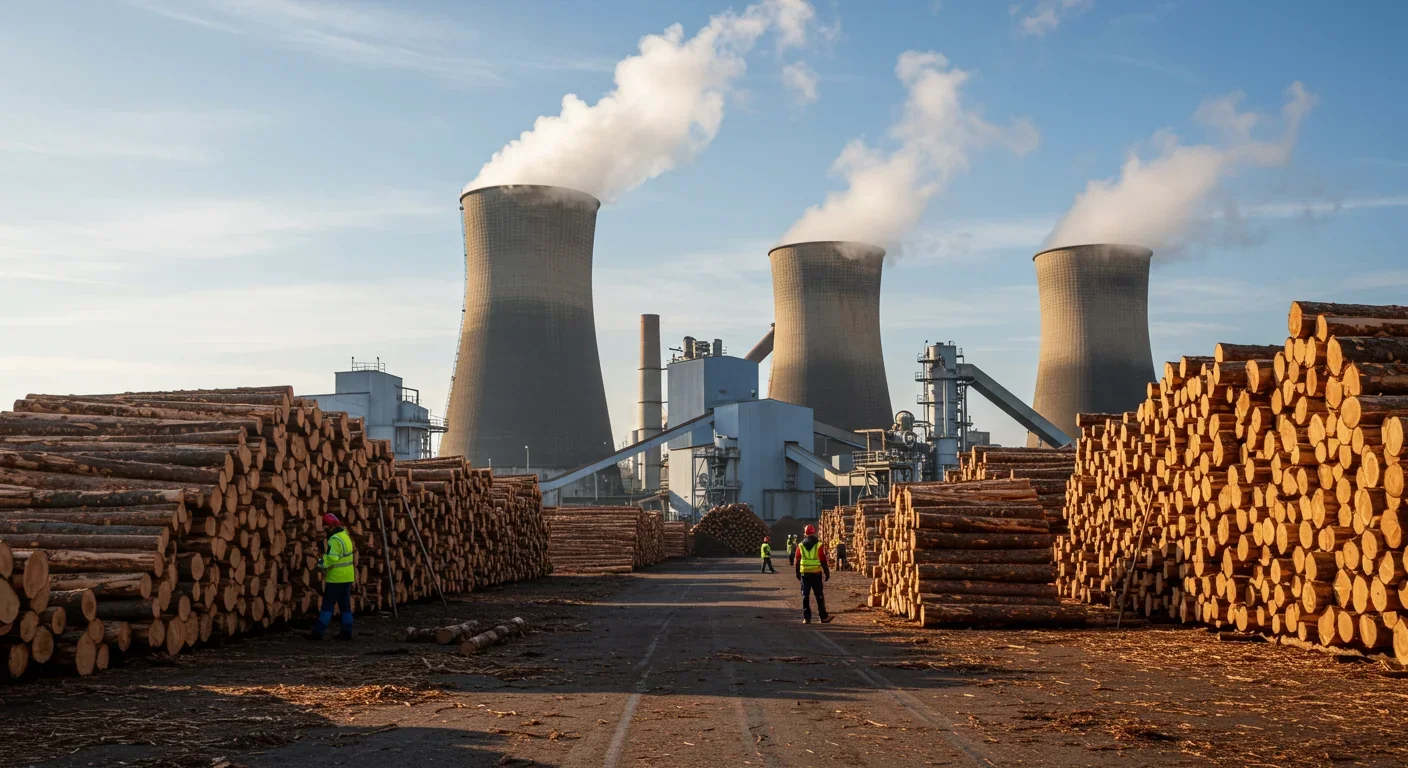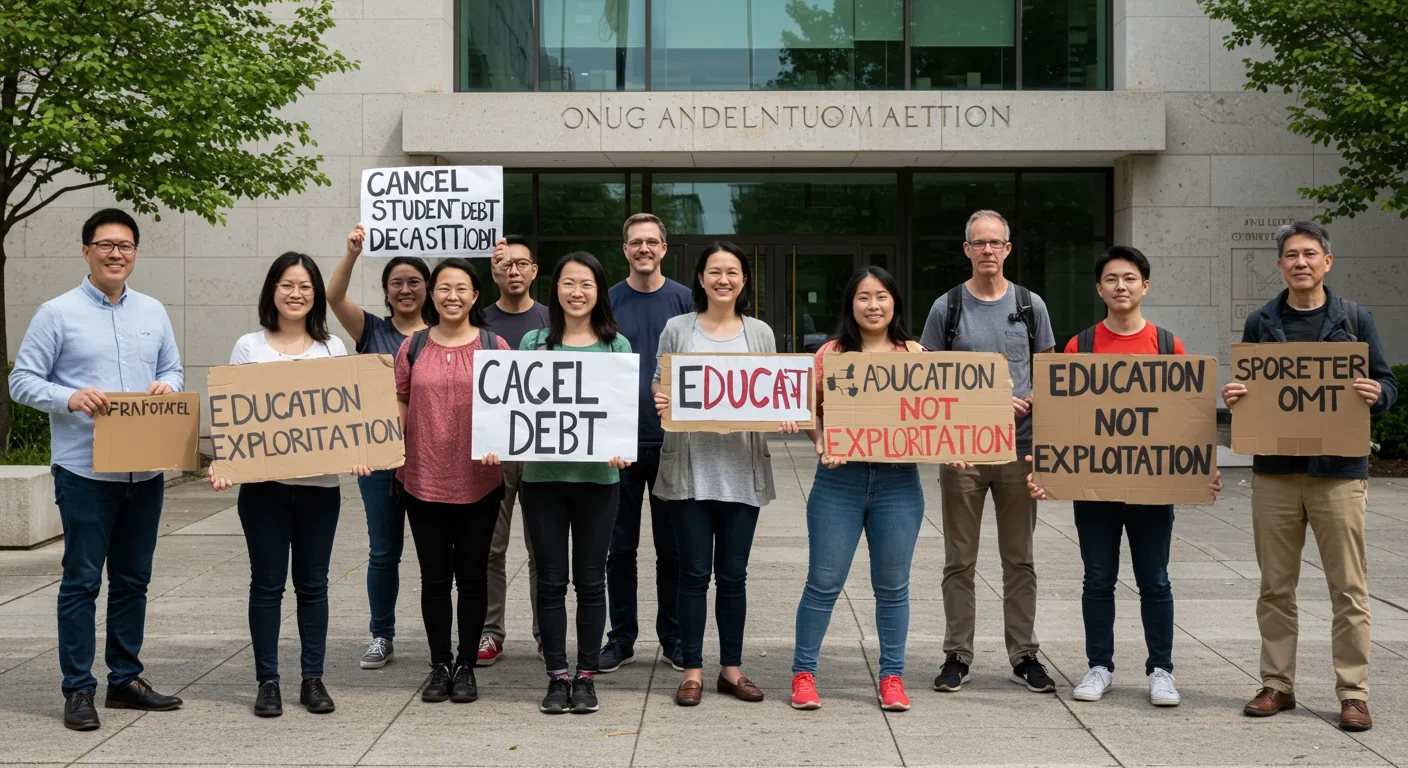Mycelium Packaging Replacing Styrofoam: Fungal Revolution

TL;DR: Scientists are transforming lignin, an abundant wood waste product, into carbon fiber that could cost three to five times less than petroleum-based alternatives while cutting carbon emissions by 20-30%.

By 2035, the material in your car dashboard, bicycle frame, or even aircraft wing might come from sawdust. That's not science fiction but the promise of a quiet revolution happening in materials science labs worldwide. Researchers are transforming lignin, a woody waste product that paper mills have burned for energy for decades, into carbon fiber that rivals petroleum-based alternatives. This breakthrough could slash production costs by up to five times while diverting millions of tonnes of waste from incinerators and landfills.
Walk into any paper mill and you'll encounter lignin, the glue that holds wood cells together. It's everywhere in the plant kingdom, accounting for 10 to 25% of all woody biomass. Yet despite producing roughly 100 million tonnes of lignin annually through pulping and bioethanol processes, we've barely scratched the surface of its potential. Only 2% gets recovered for material use. The rest? Burned for energy or dumped.
That's changing fast. Scientists have known for years that lignin's molecular structure, composed of phenylpropane units linked through carbon-carbon and ether bonds, gives it an intrinsic carbon content of 70 to 80%. That carbon-rich chemistry makes it a natural candidate for carbon fiber, which demands precisely that element in abundance. The challenge wasn't identifying lignin's potential but figuring out how to unlock it at scale.
Converting a brown powder into sleek, high-strength fibers isn't simple. The process involves four critical stages, each requiring precise control. First comes extraction and fractionation, separating lignin from cellulose and hemicellulose in wood. Different extraction methods yield different lignin types: Kraft lignin from chemical pulping, lignosulfonates from sulfite processes, or organosolv lignin from alcohol-based treatments. Kraft lignin dominates, expected to capture 45.2% of the lignin market by 2025 because it's already produced at massive scale in existing pulp mills.
Next, researchers convert that extracted lignin into a stable precursor, sometimes blending it with compounds like polyacrylonitrile or creating lignin-based phenolic resins. This step determines fiber quality, so scientists have experimented with additives and processing techniques to improve spinnability. At the University of Manchester, a research team recently achieved a major breakthrough by combining lignin with ionic liquids and polyvinyl alcohol, enabling continuous fiber spinning at pilot scale for the first time.
Then comes stabilization, heating the precursor fibers to 200 to 300°C in an oxygen-rich environment. This oxidation step cross-links the polymer chains and prevents the fiber from melting during the final carbonization phase. Finally, carbonization happens at 800 to 1200°C under an inert atmosphere, driving off non-carbon elements and leaving behind a fiber that's nearly pure carbon. The entire journey from wood waste to finished fiber can take days, but each stage is crucial for achieving the strength and stiffness that applications demand.
Material engineers care about two key numbers: tensile strength (how much force before it breaks) and modulus (how stiff it is). Lignin-based carbon fibers currently deliver tensile strengths around 2 to 3 gigapascals and moduli of 150 to 250 GPa. That puts them on par with high-strength glass fibers, which is impressive considering glass has been optimized for decades.
Premium petroleum-based carbon fibers still have an edge, reaching 3.5 to 4 GPa. But here's the key insight: most applications don't need that top-tier performance. Automotive parts, sporting goods, and many industrial components work just fine with the strength lignin fibers provide. And when you factor in cost and environmental impact, the value proposition shifts dramatically.
Researchers at Manchester tested three lignin sources, two from spruce sawdust and one from bagasse (a sugarcane by-product). The bagasse-derived lignin proved most effective, suggesting that feedstock selection plays a crucial role in fiber performance. Different plants produce lignin with varying molecular weights and functional groups, which affect how easily the material can be spun into fibers and how strong those fibers become.
Every tonne of lignin diverted from an incinerator is a tonne not adding to atmospheric CO₂. But the environmental benefits run deeper. Life-cycle assessments consistently show that lignin-based carbon fibers reduce carbon-equivalent emissions by 20 to 30% compared to conventional petroleum-derived fibers. That reduction comes from two sources: eliminating fossil feedstocks and lowering energy consumption during processing.
Petroleum-based carbon fiber production starts with extracting and refining crude oil into chemical precursors like polyacrylonitrile. That's energy intensive and ties the material to fossil fuel supply chains. Lignin, by contrast, is already extracted during existing industrial processes. Paper mills produce it whether anyone wants it or not, so using it for carbon fiber turns waste into value.

There's also the waste disposal angle. Conventional methods for handling lignin-rich residues mean landfilling, burning, or low-value reuse. Landfilling creates methane as organic matter decomposes, and incineration releases CO₂ even when energy is recovered. Converting lignin to carbon fiber keeps carbon locked in solid form for years or decades, effectively sequestering it in products rather than releasing it immediately.
The circular economy potential is substantial. A single paper mill could become both a pulp producer and a materials supplier, generating revenue from what was previously waste. That economic diversification strengthens rural communities tied to forestry and agriculture while reducing the industry's environmental footprint.
Pilot plants are already operating. LINDX Ltd., a research-backed company, produces 500 kilograms of lignin-carbon fiber per month targeting automotive composite panels. That's tiny compared to global carbon fiber demand, measured in tens of thousands of tonnes annually, but it proves the technology works outside university labs.
Scaling up faces several hurdles. Precursor viscosity, pore formation during carbonization, and achieving consistent fiber diameter all require tight process control. Softwood-derived lignin tends to have higher viscosity, which improves dimensional control but increases energy demand during stabilization. Hardwood lignin behaves differently, so manufacturers need to adapt their processes to their feedstock.
Cost reductions could be dramatic. Replacing petroleum precursors with lignin and using ionic liquid processing might cut production costs by three to five times. That price advantage would open carbon fiber to applications that currently can't justify premium materials. Think mass-market vehicles, construction materials, or consumer electronics where weight savings matter but budgets are tight.
Investment is flowing. The lignin waste market was valued at $881.62 billion in 2024 and is projected to reach $1.81 trillion by 2037, growing at 5.7% annually. Not all of that growth involves carbon fiber, lignin also goes into adhesives, dispersants, and bio-based chemicals, but it signals rising confidence in lignin's commercial potential.
Aerospace was an early adopter of carbon fiber because every kilogram saved means fuel efficiency and increased payload capacity. But aerospace demands the highest performance materials, so lignin fibers might need further optimization before they replace current suppliers. Where lignin shines is in less demanding applications where cost matters more than squeezing out every last megapascal of strength.
Automotive is the obvious target. Car manufacturers constantly seek lighter materials to improve fuel economy and extend electric vehicle range. Composite panels made from lignin-carbon fiber could replace heavier steel or aluminum in body panels, interior components, and structural parts. Since these components don't endure the extreme stresses of aircraft structures, lignin's current performance suffices.
Sporting goods represent another natural fit. Bicycle frames, tennis rackets, fishing rods, and golf clubs all benefit from lightweight, stiff materials. Consumers in this market increasingly value sustainability, so a "made from wood waste" marketing angle could command premium prices even if the material costs less to produce.
Construction and infrastructure might be the sleeper application. Reinforcing concrete with carbon fiber instead of steel rebar prevents corrosion and extends building lifespans. Civil engineers have experimented with this for years, but cost has limited adoption. If lignin-based fibers hit the right price point, we could see them in bridges, parking structures, and coastal buildings where saltwater corrodes conventional steel.
Wind turbine blades are growing larger, and larger means heavier, which creates structural challenges. Lighter composite materials let engineers build longer blades that capture more wind energy without exceeding weight limits. Lignin fibers could enable the next generation of turbine designs.
Paper mills have struggled economically as digital communication reduces demand for newsprint and office paper. Many mills have closed, taking jobs and tax revenue with them. Lignin valorization offers a lifeline. Instead of viewing lignin as waste to burn for steam, mills could sell it as a high-value feedstock.
Current pulp mill infrastructure already extracts and concentrates lignin. Optimizing that extraction for fiber production rather than energy recovery requires investment but not wholesale replacement of equipment. Mills could start small, selling lignin to specialized fiber manufacturers, then vertically integrate if the economics justify building carbonization facilities on site.
The business case depends on several factors: feedstock availability, proximity to end users, energy costs, and competing uses for lignin. A mill in a region with strong automotive manufacturing might prioritize fiber production. One near chemical plants might sell lignin for specialty chemicals. Geographic and industrial context shapes the optimal strategy.
Early movers gain advantages. Companies that develop efficient extraction and processing techniques can license those methods or build market share before competition intensifies. Intellectual property around specific lignin treatment processes, fiber spinning techniques, and quality control methods will matter as the industry matures.

Government policies increasingly favor bio-based materials and circular economy principles. The European Union's Green Deal, regulations in California and other progressive states, and corporate sustainability commitments create demand for lower-carbon alternatives. Materials with credible environmental stories, backed by life-cycle data, gain preference in procurement decisions.
Certification schemes are emerging. Just as sustainable forestry certifications like FSC guide timber purchases, bio-based material standards will help purchasers verify environmental claims. Lignin-carbon fiber producers that engage early with these certification processes can shape standards to their advantage.
Subsidies and research funding support commercialization. Governments in the US, EU, and Asia provide grants for bio-based material development, recognizing both environmental benefits and potential for domestic manufacturing jobs. Universities partner with industry to de-risk technology transfer from lab to factory.
Trade policy could play a role too. If carbon border adjustments or similar mechanisms penalize high-emission imports, domestically produced lignin fibers gain a competitive edge. Manufacturing closer to feedstock sources, particularly in regions with sustainable forestry, aligns with deglobalization trends and resilience concerns.
Technical challenges remain. Achieving consistent fiber properties from variable lignin feedstocks requires sophisticated process control. Different tree species, growing conditions, and extraction methods yield lignin with different characteristics. Manufacturers need either very controlled feedstocks or flexible processes that adapt to variation.
Market incumbency matters. Petroleum-based carbon fiber producers have decades of experience, optimized supply chains, and established customer relationships. They won't cede market share easily and may respond with their own innovations or price competition. Lignin fibers need to deliver clear advantages, whether in cost, performance, or sustainability, to overcome switching costs and risk aversion.
Scale economies favor existing producers. Building the first commercial-scale lignin-carbon fiber plant carries high capital costs and execution risk. Subsequent plants benefit from lessons learned, but someone has to go first. Joint ventures between pulp producers and composite manufacturers could share risks and align incentives.
Public perception could be an asset or obstacle. "Made from wood waste" sounds positive, evoking natural materials and recycling. But if quality issues arise or if misinformation spreads, consumer skepticism could hurt adoption. Transparent communication about performance characteristics, appropriate applications, and environmental verification will matter.
Transitioning paper mills into bio-materials hubs requires new expertise. Chemical engineers familiar with polymer processing, quality control specialists who understand carbon fiber testing, and supply chain managers who can coordinate feedstock flows all become necessary. Some skills transfer from existing pulp operations, others require hiring or training.
Rural regions with forestry infrastructure could see employment opportunities. Instead of raw logs leaving for distant processing, value-added manufacturing happens locally. That keeps more economic benefit in the community and creates jobs across the skill spectrum from technicians to researchers.
Educational institutions are responding. Universities in forestry regions now offer programs in bio-based materials and sustainable chemistry. Technical colleges teach composite manufacturing. These programs build the talent pipeline needed for industry growth.
Different regions bring different advantages to lignin-carbon fiber development. Northern Europe (Scandinavia and Canada) has vast forest resources, advanced pulp industries, and strong environmental policy drivers. Companies like Stora Enso have experimented with lignin valorization for years.
The United States combines abundant biomass, especially in the Southeast and Pacific Northwest, with strong aerospace and automotive sectors that could be early customers. Federal research institutions like Oak Ridge National Laboratory have developed lignin-carbon fiber technologies that companies can license.
Asia, particularly China and Japan, has significant paper production capacity and growing environmental pressures. Japan's focus on material science and efficiency aligns well with bio-based fiber development. China's scale could enable rapid production growth if policy prioritizes lignin utilization.
South America offers unique feedstocks. Bagasse from sugar production in Brazil has proven effective for lignin extraction. Eucalyptus plantations in Brazil and Chile supply massive pulp industries that generate lignin streams. Leveraging those feedstocks could make South American producers cost leaders.
International collaboration accelerates progress. Joint research programs, technology licensing, and multinational companies that pilot technologies in multiple regions spread knowledge and de-risk investment.
For industry stakeholders, the time to experiment is now. Pulp producers should assess their lignin streams for fiber potential, perhaps starting with small-scale extraction improvements. Composite manufacturers should test lignin-based materials in non-critical applications to build familiarity and identify sweet spots.
Investors looking at green technology should watch for companies scaling production successfully, those moving from pilot to commercial volumes while maintaining quality. Early market leaders in lignin extraction technology or fiber spinning could become acquisition targets or platform companies.
Policymakers can smooth the path through targeted research funding, procurement preferences for bio-based materials, and regulatory clarity around environmental claims. Removing barriers to biomass utilization while ensuring sustainability safeguards balances innovation with responsibility.
For consumers, awareness matters. Choosing products made with sustainable materials, when performance and price align, creates market pull that motivates manufacturers. Understanding that "bio-based" doesn't automatically mean better, scrutinizing claims and looking for credible certifications, keeps the market honest.
Lignin-based carbon fiber sits at that exciting inflection point where lab success meets market reality. The technology works. The feedstock exists in massive quantities. The environmental case is solid. Now comes the hard part: scaling production, building supply chains, establishing quality standards, and competing against entrenched alternatives.
Within five years, we'll likely see lignin fibers in consumer products, probably sporting goods or automotive interiors where sustainability messaging adds value. Within a decade, they could capture significant market share in cost-sensitive composite applications. Whether they eventually replace petroleum-based carbon fiber entirely depends on performance improvements and how quickly producers scale.
The deeper story is about rethinking waste. For generations, we've burned or buried materials that have value if we process them differently. Lignin illustrates how industrial by-products can become primary products with the right technology and market conditions. That lesson applies far beyond carbon fiber to plastics, chemicals, and materials we haven't imagined yet.
From forest to factory to finished product, lignin-based carbon fiber traces a path from waste stream to value stream. It won't happen overnight, and it won't happen without setbacks. But the trajectory seems clear: what we once threw away might soon be holding our world together.

Wormholes collapse instantly because they require exotic matter with negative energy that doesn't exist in useful quantities, and quantum instabilities destroy them faster than light can cross their throats, making spacetime shortcuts a physics impossibility.

Scientific studies reveal electromagnetic hypersensitivity sufferers experience genuine symptoms but cannot detect EMF exposure better than chance, pointing to the nocebo effect rather than electromagnetic fields as the primary cause.

Mycelium packaging grows from agricultural waste in days, decomposes in weeks, and is already shipping in Dell computers and IKEA furniture—proving fungi can replace foam.

Our attraction to impractical partners stems from evolutionary signals, attachment patterns formed in childhood, and modern status pressures. Understanding these forces helps us make conscious choices aligned with long-term happiness rather than hardwired instincts.

Virtual reality experiments are revealing how honeybees form sophisticated cognitive maps with brains smaller than sesame seeds, revolutionizing our understanding of intelligence and inspiring energy-efficient robots while guiding pollinator conservation.

Millions of student loan borrowers are refusing to repay as an organized protest against a $1.77 trillion debt system they view as exploitative. With one in three borrowers at risk of default by 2025, this movement challenges whether the entire higher education financing model can survive.

Blockchain-based social networks like Bluesky, Mastodon, and Lens Protocol are growing rapidly, offering user data ownership and censorship resistance. While they won't immediately replace Facebook or Twitter, their 51% annual growth rate and new economic models could force Big Tech to fundamentally change how social media works.